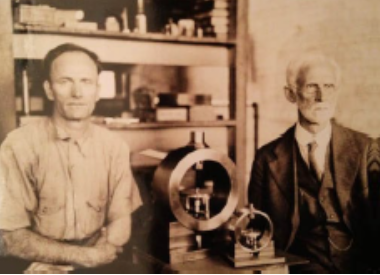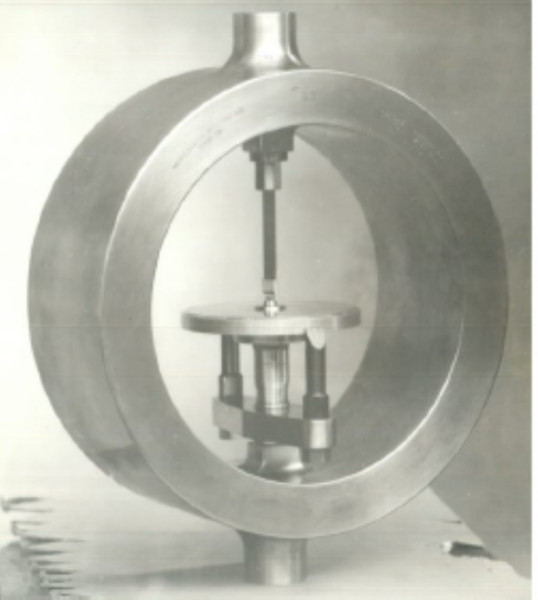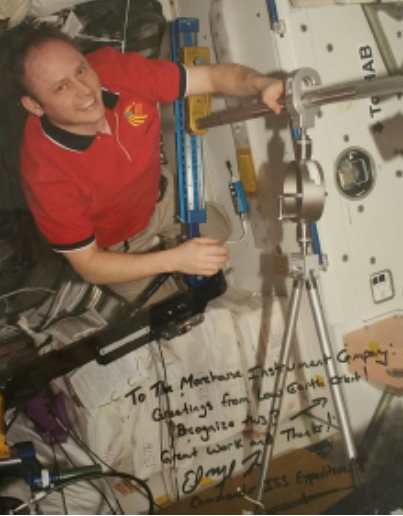Morehouse made its first Proving Ring in 1925
The development of the Proving Ring was driven by the need for reliable material testing methods during the early 20th century, a period marked by rapid industrialization and significant safety challenges.
In the 1920s, the problem of exploding boilers and steam engines became increasingly urgent as demand for power increased. When a boiler exploded, it effectively became a massive bomb, scattering debris over a wide area and often causing casualties. The maritime industry faced similar challenges, particularly with ship plates. These plates, typically riveted together, were subject to differential expansion and contraction rates, which could cause rivets to pop and compromise vessel integrity. Some historians even speculate that a fire aboard the Titanic, occurring weeks before its fateful encounter with an iceberg, may have weakened the ship's structure, contributing to its eventual sinking.
At the heart of these industrial calamities lay a fundamental issue: inadequate material control and testing methods. The inconsistent verification of material strength and reliability in construction and manufacturing led to unpredictable performance under stress. Engineers and scientists of the time recognized that a material's hardness was critical in determining its suitability for various applications.
One method of testing material was a Brinell hardness test invented around 1900. This test involved pressing a 10 mm steel ball into the surface of the material being tested using a hydraulic cylinder. The size of the resulting indentation would then be measured to determine the material's hardness. However, the Brinell tester had a significant flaw: the hydraulic cylinder generated a notoriously inaccurate testing force. This inconsistency in applied force led to unreliable and non-repeatable test results, making it difficult to establish consistent quality standards across industries.
S.N. Petrenko and H.L. Whittemore at the NBS started investigating these inconsistencies in the Brinell Hardness testing machines. Petrenko identified inaccurate force measurements as the root cause of discrepancies in test results. Petrenko proposed using deadweights for more consistent force application, leading to constructing a prototype deadweight machine at NBS.
Building on this success, Petrenko developed an improved machine with cast iron weights and enhanced loading techniques. To address the challenge of transferring laboratory accuracy to field testing, Petrenko conceived the idea of a metal ring that could measure deflection under load. Whittemore, head of the Engineering Mechanics Section, suggested incorporating a vibrating reed and micrometer screw, giving birth to the Whittemore-Petrenko Proving Ring.
The NBS workshops produced the first Proving Ring devices in the early 1920s, and they were looking for a company to collaborate with them in manufacturing the Proving Ring.
Morehouse Instrument Company, a local machine shop in York, Pennsylvania, collaborated with NBS to refine and manufacture the Proving Ring. William S. Morehouse met with Whittemore and his wife at Mr. Morehouse’s home on May 30th and 31st in 1925 to discuss the possibility of Morehouse manufacturing and refining the existing Proving Ring to sell. Morehouse, a distant relative of Whittemore, had a skilled machinist named Harry Zumbrun, who was known as the person who could figure out how to machine almost anything.

This meeting resulted in an agreement that Morehouse would begin manufacturing the Proving Ring. A sample Proving Ring and blueprint drawing No. B 230, dated April 17, 1925, were sent to Morehouse. Upon receipt, Morehouse began manufacturing the Proving Ring. The first was made of 50-point carbon steel, suggested by Whittemore, but it was unsuccessful. This was later changed to Carpenter 5/317 alloy steel.
Morehouse Instrument Company's involvement was pivotal in commercializing the Proving Ring. The collaboration with NBS led to the production of high-quality Proving Rings distributed to various industries, significantly enhancing the accuracy of material testing. The first Proving Ring manufactured by Morehouse was delivered to the Naval Aircraft Factory in Philadelphia in 1925.

The collaboration was nothing short of revolutionary. With the help of Dr. George K. Burgess, Director of the Bureau of Standards, actively writing calibration laboratories interested in calibration work to purchase Proving Rings from Morehouse.
Design and Functionality
The collaboration between Morehouse and NBS continued, with Morehouse refining the Proving Ring to include integral internal bosses. These bosses were a significant improvement, addressing issues with repeated loading tests. What was interesting about the NBS history is that the actual discussion below preceded NBS's application for a Patent.

In one discussion, Mr. Morehouse admitted to not having enough money to Patent this significant change in the design. However, refinement continued.

The Proving Ring consists of an elastic ring, a micrometer screw, and a vibrating reed. When a force is applied, the ring deforms, and the deflection is measured using the micrometer and vibrating reed.
This design allows for precise and repeatable force measurements. Its key features include an elastic ring made from high-quality materials to ensure consistent deformation under load, a micrometer screw to provide precise measurements of ring deflection, and a vibrating reed that enhances the accuracy of deflection measurements. Each ring is individually calibrated against known standards, often deadweight standards, to ensure consistent and repeatable readings.
Impact and Applications
The introduction of the Proving Ring revolutionized material testing by providing a reliable method to calibrate force measurement devices like Brinell hardness testers. This advancement allowed industries such as shipbuilding, aerospace, and construction to enforce higher safety standards and reduce the risk of equipment failures. Morehouse continues to manufacture Proving Rings today, maintaining their legacy of precision and reliability since 1925.
Modern Developments
While the basic design of the Proving Ring has remained largely unchanged, advancements in materials science and electronics have led to refinements, such as the use of digital displays for more precise readings. The Proving Ring's reliability is so well-regarded that it is even used on the International Space Station.
Morehouse continues to make Proving Rings and has since 1925.

The Proving Ring's enduring legacy is evident in its continued use and the safety and quality standards it has helped establish across multiple industries. Its development highlights the importance of precision in engineering and the impact of collaborative innovation.


